Dr. Norico YAMADA Dinotom dinoflagellates reveal the process of chloroplast creation
invitée par Petra BULANKOVA - EEB Seminar Series
12h
Le séminaire du Dr. Norico YAMADA (Station Biologique de Roscoff) aura lieu dans la salle Favard, IBENS 46 rue d’Ulm 75005 Paris
One of the most dramatic transitions in eukaryotic cell evolution is that from being a non-photosynthetic protozoan, to a photosynthetic alga, via the acquisition of chloroplasts. This process has happened many times in eukaryotic evolution, but most of the photosynthetic eukaryotes that exist today, including plants, are too ancient to give us clues into how this cellular merger occurs.
"Dinotoms" are a unique group of dinoflagellate algae that harbour photoendosymbionts from another eukaryotic algae, the diatoms. Dinotoms are repeatedly acquiring their symbionts from the wild, providing a rare model system to observe the evolutionary transition from free-living microalgae to permanently maintained plastids. In the genus Durinskia, dinotoms exhibit three successive evolutionary stages : a kleptoplastic stage in D. capensis, a stage containing multiple permanent endosymbionts in D. kwazulunatalensis, and a stage with a single permanent endosymbiont in all other described Durinskia spp. Comparison of these dinotoms at the different evolutionary stages will provide us the rate opportunities to experimentally investigate of how the evolutionary integration processes of endosymbionts occur.
Here, I discuss ongoing two dinotom projects in my group : 1) a comparative transcriptomics analysis of two dinotom species, D. kwazulunatalensis and D. capensis, aimed at identifying genetic keys that separate their endosymbiotic evolutionary stages, and 2) a trial to establish genetic transformation tools for dinotoms, which will enhance our understanding of dinotoms though molecular biological approaches.


